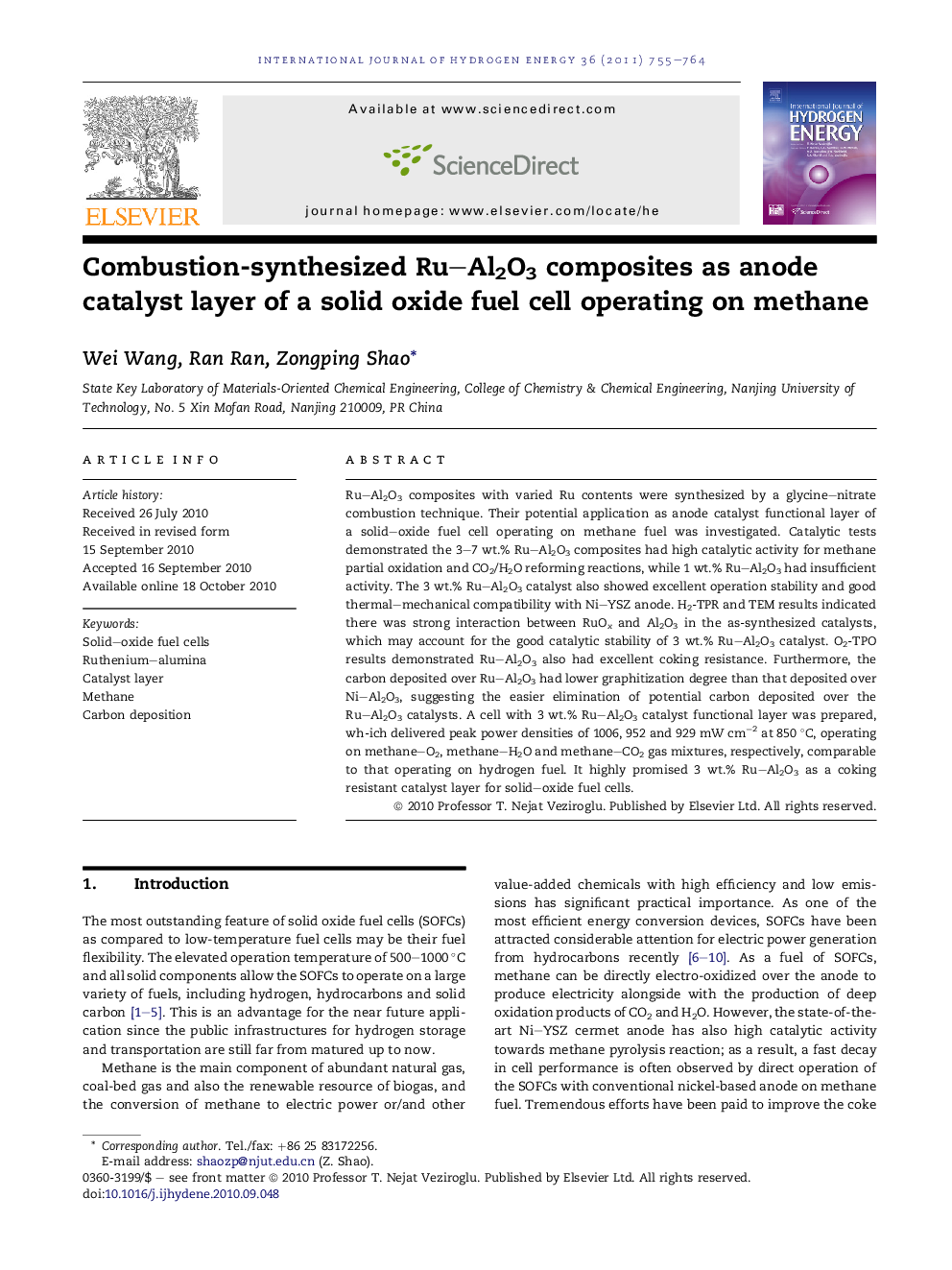| Article ID | Journal | Published Year | Pages | File Type |
|---|---|---|---|---|
| 1277831 | International Journal of Hydrogen Energy | 2011 | 10 Pages |
Ru–Al2O3 composites with varied Ru contents were synthesized by a glycine–nitrate combustion technique. Their potential application as anode catalyst functional layer of a solid–oxide fuel cell operating on methane fuel was investigated. Catalytic tests demonstrated the 3–7 wt.% Ru–Al2O3 composites had high catalytic activity for methane partial oxidation and CO2/H2O reforming reactions, while 1 wt.% Ru–Al2O3 had insufficient activity. The 3 wt.% Ru–Al2O3 catalyst also showed excellent operation stability and good thermal–mechanical compatibility with Ni–YSZ anode. H2-TPR and TEM results indicated there was strong interaction between RuOx and Al2O3 in the as-synthesized catalysts, which may account for the good catalytic stability of 3 wt.% Ru–Al2O3 catalyst. O2-TPO results demonstrated Ru–Al2O3 also had excellent coking resistance. Furthermore, the carbon deposited over Ru–Al2O3 had lower graphitization degree than that deposited over Ni–Al2O3, suggesting the easier elimination of potential carbon deposited over the Ru–Al2O3 catalysts. A cell with 3 wt.% Ru–Al2O3 catalyst functional layer was prepared, wh-ich delivered peak power densities of 1006, 952 and 929 mW cm−2 at 850 °C, operating on methane–O2, methane–H2O and methane–CO2 gas mixtures, respectively, comparable to that operating on hydrogen fuel. It highly promised 3 wt.% Ru–Al2O3 as a coking resistant catalyst layer for solid–oxide fuel cells.
